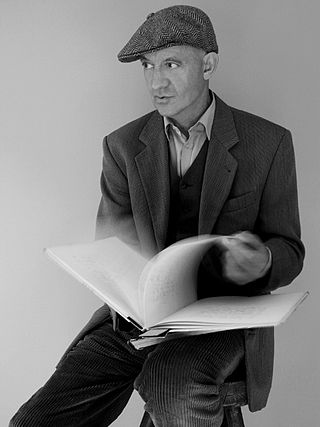
Christian Johann Heinrich Heine was a German poet, writer and literary critic. He is best known outside Germany for his early lyric poetry, which was set to music in the form of Lieder by composers such as Robert Schumann and Franz Schubert.
Siegbert Salomon Prawer was Taylor Professor of the German Language and Literature at the University of Oxford.

Joseph Hirsch (Tzvi) Carlebach was a German Orthodox rabbi, natural scientist, and scholar of the history of the Jews in Germany.

Ephraim Carlebach, was a German-born Orthodox rabbi.

Ezriel Carlebach was a leading journalist and editorial writer during the period of Jewish settlement in Palestine and during the early days of the state of Israel. He was the first editor-in-chief of Israel's two largest newspapers, Yediot Ahronot, and then Ma'ariv.
Elisheva Carlebach Jofen is an American scholar of early modern Jewish history.
Shlomo Carlebach was a German-born American Haredi rabbi and scholar.
Felix Falk Carlebach was a German-born British rabbi in Manchester, England.

Salomon Heine was a merchant and banker in Hamburg. Heine was born in Hanover. Penniless, he came to Hamburg in 1784 and in the following years acquired sizeable assets. It was common knowledge at the time that he was benefactor and patron to his nephew Heinrich Heine. Because of his wealth – by the time of his death his estate was worth an estimated € 110 million – he was called "Rothschild of Hamburg".
Israelitisches Familienblatt was a Jewish weekly newspaper, directed at Jewish readers of all religious alignments. Max Lessmann and Leo Lessmann founded the Familienblatt, which was published by the printing and publishing house Buchdruckerei und Verlagsanstalt Max Lessmann first in Hamburg, and then in Berlin (1935–1938). The Familienblatt was the only newspaper dealing with majorly Jewish issues in Germany which was run by a private business not aligned to a Jewish organisation of any kind. The editorial and printing offices were located in ABC-Straße 57 in Hamburg. The Hamburg agglomeration, consisting of the Free and Hanseatic City of Hamburg, the Danish-Holsteinian cities of Altona and Wandsbek as well as the Hanoverian city of Harburg upon Elbe, had been an important Jewish centre in Europe and in number with c. 9,000 persons, the biggest in Germany. Only by the first third of the 19th century did Berlin, Prussia's capital, overtake with Jews migrating from the former Polish provinces, which Prussia annexed in the Polish Partitions. Originally directed to readers in Hamburg's metropolitan area the Familienblatt gained more and more readers and spread nationwide in Germany. Israelitisches Familienblatt was prohibited to appear any further after the November Pogroms on 9–10 November 1938.

The Jungfernhof concentration camp was an improvised concentration camp in Latvia, at the Mazjumprava Manor, near the Šķirotava Railway Station about three or four kilometers from Riga. The camp was in operation from December 1941 through March 1942, and served as overflow housing for Jews from Germany and Austria, who had originally been intended for Minsk as a destination.

The Hamburg Temple is a former Reform Jewish congregation and synagogue, located in Hamburg, Germany. The congregation was the first permanent Reform Jewish community and the first to have a Reform prayer rite. It operated from 1818 to 1938. On 18 October 1818 the Temple was inaugurated and later twice moved to new edifices, in 1844 and 1931, respectively. The congregation abandoned the synagogue in 1938.
Julius Carlebach was a German-British rabbi and professor of sociology and history.

Michael Beer was a German Jewish poet, author and playwright.

Hartwig Naftali Carlebach (1889–1967), known as Naphtali, was a leading rabbi in Berlin, Germany; Baden, Austria; and Manhattan, New York.
The League of Jewish Women in Germany was founded in 1904 by Bertha Pappenheim. Pappenheim led the JFB throughout the first twenty years of its existence, and remained active in it until her death in 1936. The JFB became increasingly popular through the 20th century. At its peak in 1928, the organization had 50,000 members from 34 local branches and 430 subsidiary groups. At the time, the JFB was Germany's third largest Jewish organization, with 15–20% of Jewish women in Germany becoming members.

Natias Neutert is a German artist, author, poet, orator, and translator who lives in Hamburg and Berlin.

Salomon Jacob Cohen was a German Jewish Hebrew scholar, teacher, writer and translator of the Bible. He was an important representative of the Haskalah in Berlin, Hamburg and Vienna.
Elias Salomon Nathan was a German author and physician.

The Bornplatz Synagogue was a synagogue located in the Grindel district of Hamburg. It was inaugurated in 1906 and was one of the largest synagogues in Germany. It served as the main synagogue of the German-Israelite Community.













